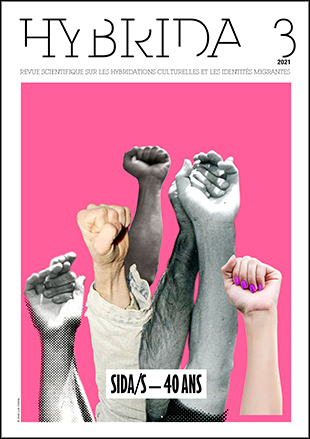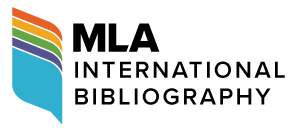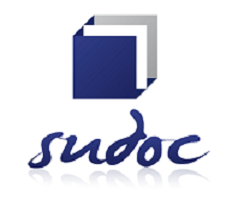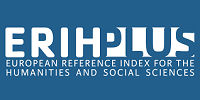“What a sublime disease": ‘Une visite inopportune’ [1988] by Copi or the “Comedy of Death”
DOI:
https://doi.org/10.7203/HYBRIDA.3.21909Keywords:
theatre, autobiography, Aids, death, humour, Copi Abstract
Abstract
On 11th December 1987, Copi, dying of the new disease that was terrorising the world, and having gained the esteem of more than one intellectual, received the Grand Prix de Littérature Dramatique awarded by the City of Paris. Sadly, three days later, on 14 December, he died at the Claude-Bernard Hospital in Paris. Copi was aware of the arrival of an untimely “visit” that would lead him to create one of his best plays: Une visite inopportune [1988]. In this study, we want to commemorate, in a way, the creative ingenuity with which Copi faced his agony due to Aids and to highlight the validity of an autobiographical play created in the midst of a disease that condemns homosexuals in the 1980s in France (and in the whole world). First, we will try to briefly contextualise the first years of the pandemic in France in order to relate the story to the Aids writing. And secondly, we will analyse the dramaturgical resources that Copi used with humour to stage the arrival of the “My Aids anniversary” and we will highlight the importance of this subversive “comedy of death”.
 Downloads
Downloads
 References
References
Aira, C. (1991). Copi. Viterbo.
Amícola J. (2000). Campeones camp : Copi y Perlongher. In Camp y posvanguardia. Manifestaciones culturales de un siglo fenecido (pp. 61-88). Paidós.
Arias, A. (2008): L’Écriture retrouvée. Broché.
Barbéris, I. (2014). Les Mondes de Copi, Machines folles et chimères. Ôrizons.
Barbéris, I. (2007). Copi : le texte et l’espace. Mimésis parodique, mise en scène de soi et subversion identitaire dans les années parisiennes (1962-1987) [Thèse de Doctorat, Université Paris Nanterre]. Banque de données. https://www.sudoc.fr/116791128
Barège, T. (2013): Une visite inopportune de Copi : un testament français ? Lecture intertextuelle. In F. Morcillo et C. Pélage, Littératures en mutation, Ecrire dans une autre langue (pp. 159-172). Paradigme.
Bourgois, Ch. (1990). Je me souviens de Copi. In Copi (pp. 5-6). Christian Bourgois.
Copi. (1988). Une visite inopportune. Christian Bourgois.
Cournot, M. (1988). Copi n’est plus. In Copi, Une visite inopportune (pp. 78-80). Christian Bourgois.
Danou, G. (1994). Le corps souffrant. Littérature et médecine. Champ Vallon.
Godin, D. (1999). Le réel dérisoire. Une visite inopportune. In Érudit, Décennie russe à Montréal 90(1), 168-170. https://id.erudit.org/iderudit/16516ac
Hocquenghem, G. (1979). Race d’Ep! : Un siècle d’images de l’homosexualité. Grasset et Fasquelle.
Hocquenghem, G. (1988). Ève. LGF.
Hocquenghem, G. (1988). Copi soit-il. In Copi, Une visite inopportune (pp. 81-83). Christian Bourgois.
Joyce, J. (1983). Ulises. Lumen.
Lavelli, J. (1988). Avec Copi disparaît un grand dramaturge de notre temps. In Copi, Une visite inopportune (pp. 84-85). Christian Bourgois.
Lebovici, E. (2017). Ce que le sida m’a fait. Art et activisme à la fin du XXe siècle. La Maison Rouge.
Lebovici, E. (2019). Sida. Arcadia / MACBA.
Le Talec, J. (2008). Folles de France; repenser l’homosexualité masculine. La Découverte.
Monleón, A. (1997) Escribirse con Sida. In A. Haderbache y A. Monleón, Sida y Cultura (pp. 72-79). Artes Gráficas Soler.
Moreno, M. (2017). Grageas para Copi. In A. Pauls, C. Aira et al., Copi. La hora de los monstruos. Ayuntamiento de Barcelona / Instituto de Cultura.
Morier, H. (1998). Dictionnaire de poétique et de rhétorique. PUF.
Pavis, P. (1998). Diccionario del teatro. Dramaturgia, estética, semiología. Paidós.
Perlongher, N. (1988). El fantasma del sida. Puntosur.
Preciado, P. B. (2009). Terror anal: apuntes sobre los primeros días de la revolución homosexual. In G. Hocquenghem y P. B. Preciado, El deseo homosexual / Terror anal (pp. 133-174). Melusina.
Pujante González, D. (2010). Sida et création aux temps postmodernes : « Notre passion deviendra littérature ». In N. Balutet (dir.), Écrire le sida (coll. Thériaka, Rémèdes et Rationalités, pp. 17-30). Jacques André.
Pujante González, D. (2017). Les « journaux de sida » ou les récits de vie non-exemplaires. In A. Tomiche (dir.), Le Comparatisme comme approche critique. Littérature, arts, sciences humaines et sociales / Literature, the Arts, and the Social Sciences, Tome 2, Littérature, arts, sciences humaines et sociales / Literature, the Arts, and the Social Sciences 313(18), 215-226. Classiques Garnier.
Roca, F. [2008] (2012). La posteridad de las ratas (buscando a Copi). Dramaturgia Uruguaya. https://dramaturgiauruguaya.uy/la-posteridad-de-las-ratas-buscando-a-copi/
Rosenzvaig, M. (2009). El teatro de la enfermedad. Biblos.
Sontag, S. (2021). La enfermedad y sus metáforas. El sida y sus metáforas. Debolsillo.
Souquet, L. (2013). Copi : l’Immoderato cantabile d’un Argentin francophone. In F. Morcillo et C. Pélage (dir.), Littératures en mutation, Ecrire dans une autre langue (pp. 131-158). Paradigme.
Souquet, L. (2015). Copi et Puig, ovnis du théâtre argentin ? In C. Breuil (coord.), La revolution théâtrale dans le Río de la Plata / The Theatrical Revolution in the Río de la Plata, ILCEA (22), n. p. https://doi.org/10.4000/ilcea.3242
Souquet, L. (2020). Esprit français et contre-culture latino-américaine chez Copi. In A. Lara-Alengrín et V. Pitois Pallares (coords.), Littératures contreculturelles hispano-américaines (XXe-XXIe siècles), CECIL, Cahiers d’études des cultures ibériques et latino-américaines (6), 11-28. http://cecil-univ.eu/c6_1/
Vásquez Sáenz, H. (2020). Le théâtre de Copi : processus et stratégies trans. Une approche queer [Thèse de Doctorat, Université de Valence / Université de Strasbourg]. Banque de données. http://www.sudoc.abes.fr/cbs//DB=2.1/CMD?ACT=SRCHA&IKT=1016&SRT=RLV&TRM=henry+ferney+vasquez+saenz
Published
How to Cite
-
Abstract617
-
HTML (Français )178
-
PDF (Français )661
Issue
Section
License
![]()
All the documents in the OJS platform are open access and property of their respective authors.
Authors publishing in the journal agree to the following terms:
- Authors keep the rights and guarantee HYBRIDA the right to be the first publication of the document, licensed under a Creative Commons license Attribution-NonCommercial-ShareAlike 4.0 International (CC BY-NC-SA 4.0) that allows others to share the work with an acknowledgement of authorship and publication in the journal.
- Authors are allowed and encouraged to spread their work (once published) through electronic means using personal or institutional websites (institutional open archives, personal websites or professional and academic networks profiles) once the text has been published.
















